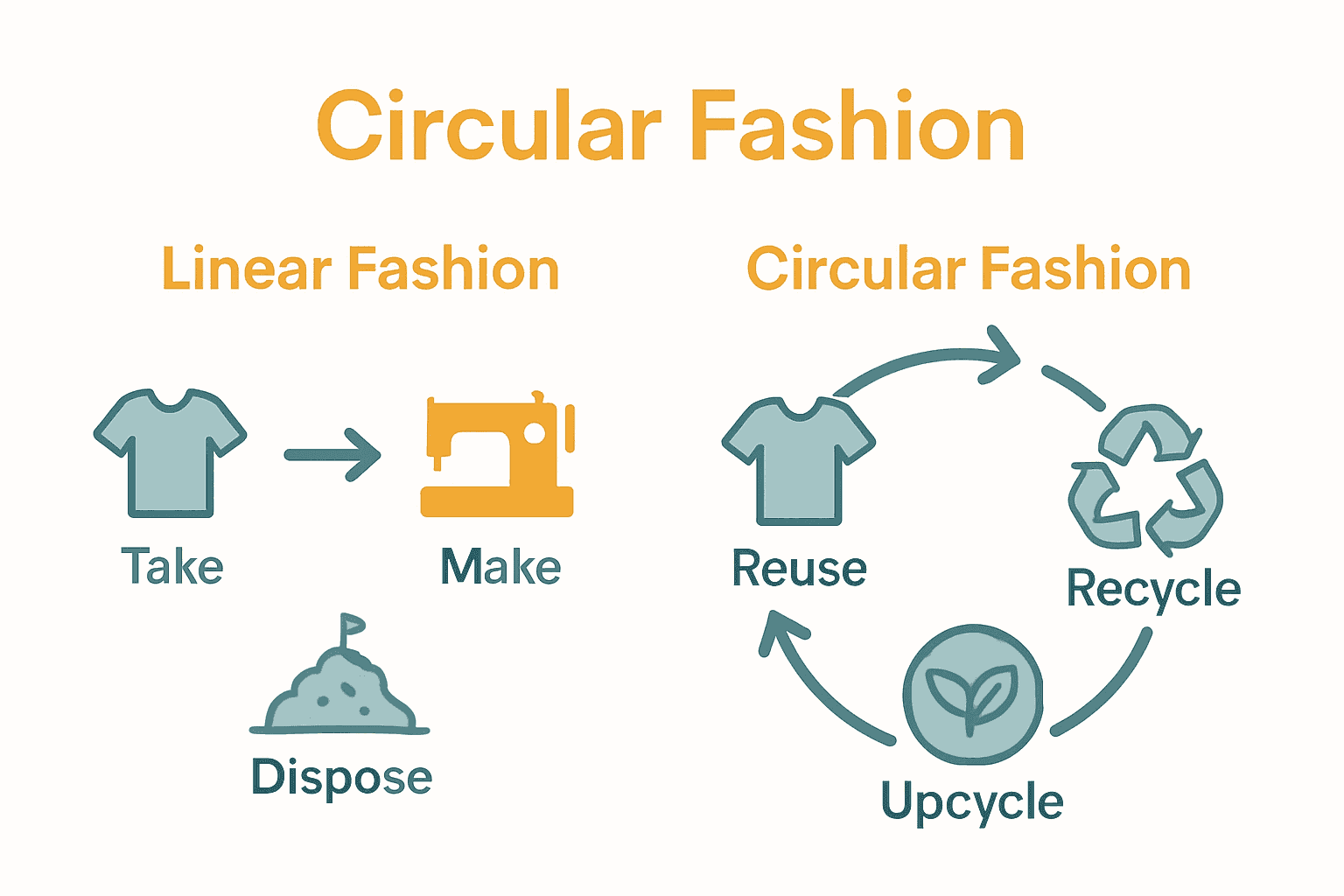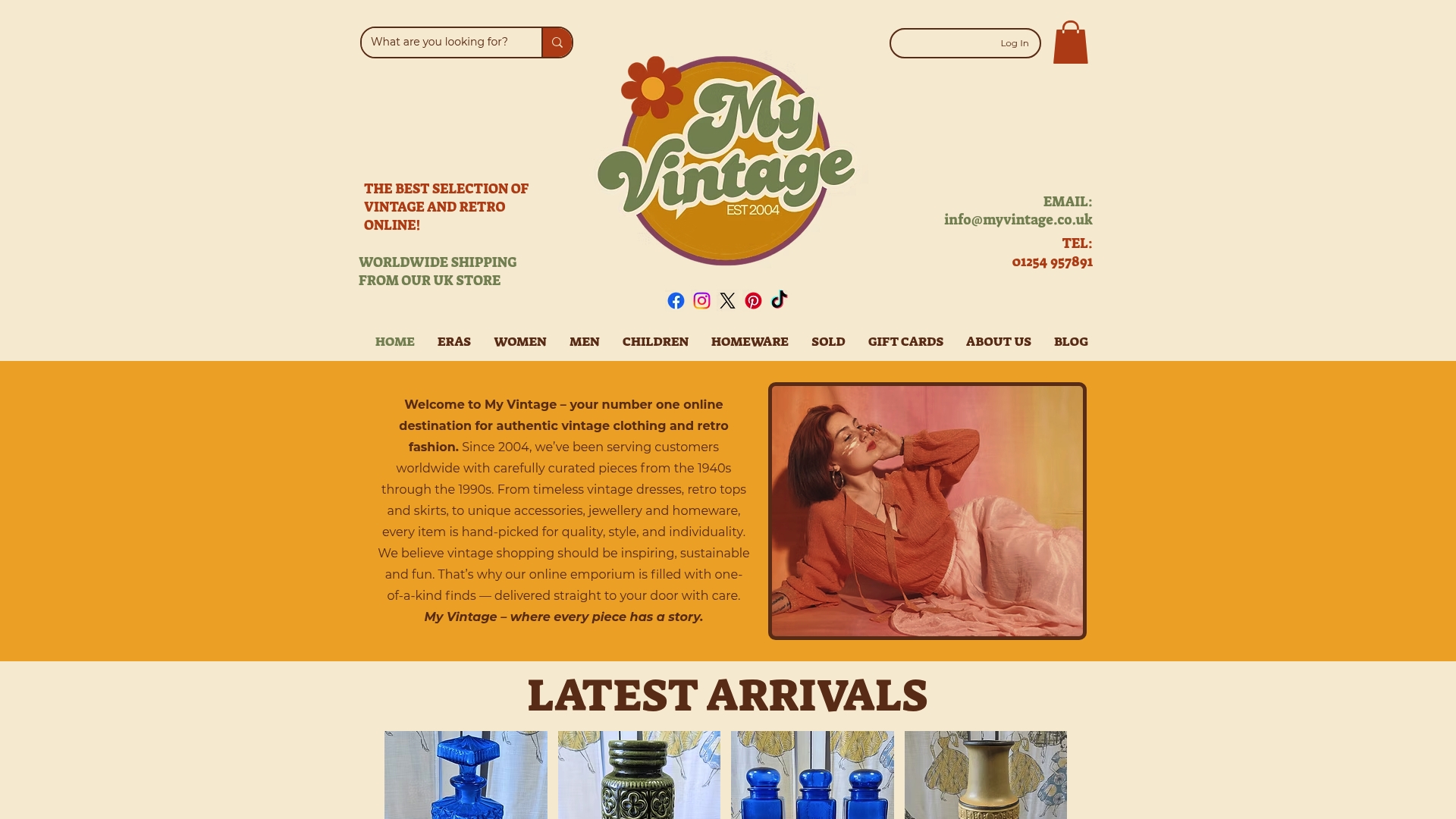The Essential Guide to Sustainability in Fashion
- Emma

- Oct 22
- 6 min read
Did you know the fashion industry produces over 92 million tons of textile waste each year? This staggering figure spotlights why redefining our relationship with clothing matters for both the planet and its people. Sustainable fashion goes far beyond eco-friendly fabrics, touching every step of a garment’s lifecycle. Understanding what true sustainability means in this context helps you make smarter, more responsible choices that benefit individuals, communities, and the environment.

Table of Contents
Key Takeaways
Point | Details |
Sustainable Fashion Complexity | Sustainability encompasses environmental, social, and economic factors throughout a garment’s lifecycle, beyond just fabric choices. |
Circular Economy Focus | Sustainable fashion promotes a circular model, minimising waste and extending the lifecycle of clothing through innovative practices like upcycling. |
Consumer Benefits | By choosing sustainable fashion, consumers can reduce their environmental footprint, enjoy high-quality products, and support ethical practices. |
Challenges in Shopping | Navigating sustainability requires awareness of greenwashing; consumers should prioritize transparency and quality in their purchasing decisions. |
Defining Sustainability in the Fashion Industry
Sustainability in fashion is far more complex than simply selecting organic cotton or recycling clothing. Sustainable fashion represents a comprehensive approach that considers environmental, social, and economic impacts throughout a garment’s entire lifecycle. As research from fashion sustainability experts indicates, this multifaceted concept involves reducing greenhouse gas emissions, implementing eco-friendly manufacturing processes, and creating clothing with minimal negative environmental consequences.
At its core, sustainable fashion challenges the traditional linear fashion model of “take-make-dispose” and instead promotes a circular economy where resources are used efficiently and waste is minimised.

The Sustainability of Vintage Fashion: Go Green Go Retro provides deeper insights into how vintage and retro fashion inherently support sustainable practices by extending the lifecycle of clothing.
Key characteristics of sustainable fashion include:
Using recycled or regenerative materials
Ensuring fair labour practices and worker welfare
Minimising carbon footprint during production
Designing durable, long-lasting garments
Promoting transparency in supply chains
Ultimately, sustainable fashion isn’t just an environmental strategy—it’s a holistic approach to reimagining how we produce, consume, and value clothing in a more responsible, ethical manner.
Types of Sustainable Fashion Practices
Sustainable fashion practices represent an innovative approach to transforming the traditional fashion industry by minimizing environmental impact and promoting ethical production methods. According to research from UK fashion sustainability experts, companies are increasingly adopting circular and regenerative practices that fundamentally reimagine clothing production and consumption.
Upcycling and reclaimed fashion have emerged as powerful strategies in this transformation. What Is Reclaimed Fashion? Understanding Its Significance provides deeper insights into how repurposing existing materials can dramatically reduce textile waste and extend garment lifecycles. These practices involve transforming discarded or unused clothing and textiles into new, valuable fashion pieces.
Key sustainable fashion practices include:
Here’s a comparison of major sustainable fashion practices:
Practice | Key Approach | Environmental Benefit |
Upcycling & Reclaimed Fashion | Repurposing old textiles & garments | Reduces textile waste |
Zero-Waste Design | Pattern cutting with no fabric waste | Minimises landfill input |
Circular Design Models | Prioritising recyclability | Promotes reuse cycles |
Digital Fashion Technologies | Virtual prototyping & visualisation | Cuts material consumption |
Organic & Recycled Materials | Using eco-friendly, recycled fabrics | Lowers resource demands |
Utilising organic and recycled fabric materials
Implementing zero-waste design techniques
Adopting digital fashion technologies to reduce resource consumption
Creating circular design models that prioritise recyclability
Developing innovative manufacturing processes with minimal environmental footprint
Digital technologies are also revolutionising sustainable fashion, enabling designers to prototype and visualise clothing with significantly reduced material waste.
By embracing these multifaceted approaches, fashion brands can create beautiful, ethical clothing that respects both environmental constraints and consumer aesthetic desires.
Environmental and Social Impact of Sustainable Choices
Sustainable fashion extends far beyond aesthetic choices, representing a critical approach to addressing environmental and social challenges within the global textile industry. According to research on corporate social responsibility, the fashion sector plays a pivotal role in minimising environmental degradation while promoting ethical working conditions and equitable practices.
The environmental impact of sustainable fashion is profound. By reducing waste, minimising pollution, and implementing circular design principles, fashion brands can significantly decrease their carbon footprint. These practices involve carefully selecting materials, optimising production processes, and creating clothing designed for longevity and eventual recycling.
Key environmental and social impacts include:
Reducing greenhouse gas emissions from textile production
Protecting natural ecosystems from harmful industrial practices
Ensuring fair wages and safe working conditions for garment workers
Minimising water consumption and chemical pollution
Supporting local and global communities through ethical sourcing
Social dimensions are equally crucial. Understanding the Benefits of Sustainable Fashion highlights how ethical fashion choices directly contribute to improving worker welfare and creating more transparent, accountable supply chains. By prioritising human rights alongside environmental stewardship, sustainable fashion represents a holistic approach to reimagining industry practices.
Benefits of Sustainable Fashion for Consumers and Industry
Sustainable fashion represents a transformative approach that delivers significant advantages for both consumers and the broader fashion industry. According to recent research, this innovative model offers multifaceted benefits that extend well beyond traditional clothing production paradigms, creating value through ethical practices and environmental consciousness.
For consumers, sustainable fashion provides multiple compelling advantages. Understanding the Advantages of Sustainable Fashion illuminates how individuals can make meaningful choices that align with their environmental values while enjoying high-quality, responsibly produced clothing. These choices enable consumers to reduce their personal environmental footprint and support more transparent, equitable supply chains.
Key benefits for consumers and the industry include:
Reduced environmental impact through responsible production
Enhanced product quality and durability
Greater transparency in manufacturing processes
Alignment with evolving consumer ethical expectations
Opportunities for innovative design and technological advancement
From an industry perspective, sustainable fashion represents a strategic opportunity to adapt to changing regulatory landscapes and consumer preferences. By embracing circular design principles, reducing waste, and prioritizing ethical production, fashion brands can differentiate themselves, build stronger consumer trust, and contribute to a more responsible global economic model.
Common Challenges and How to Shop Sustainably
Sustainable fashion navigation requires consumers to overcome significant challenges in an increasingly complex marketplace. Research indicates that greenwashing and lack of transparency remain primary obstacles for individuals seeking genuinely ethical clothing choices, making informed purchasing decisions more critical than ever.
What is Thrift Fashion? Understanding Its Impact and Appeal reveals how alternative shopping approaches can help consumers navigate sustainable fashion’s intricate landscape. By understanding the nuanced challenges, shoppers can make more intentional and environmentally responsible clothing selections.
Key strategies for sustainable shopping include:
Researching brands’ authentic sustainability practices
Prioritising quality over quantity
Verifying ethical sourcing and production methods
Investing in durable, timeless pieces
Supporting transparent and committed sustainable brands
Choosing second-hand or vintage clothing options
Understanding material composition and environmental impact
Consumers can effectively combat greenwashing by demanding transparency, asking critical questions about production processes, and supporting brands that provide comprehensive information about their environmental and social practices. By becoming educated and discerning shoppers, individuals can drive meaningful change in the fashion industry while curating a wardrobe that reflects their ethical values.
Make Sustainable Fashion Part of Your Everyday Life
Choosing sustainable fashion does not have to be overwhelming. If you feel frustrated by greenwashing or unsure how to find authentic, eco-friendly styles that truly reflect your individuality, you are not alone. Many readers of this guide share the same aim to lower their environmental impact while building a wardrobe filled with high-quality, unique pieces. Vintage fashion, discussed throughout this article, naturally supports circular design and makes every purchase a meaningful step toward a better world.

Discover the difference that real sustainability and timeless style can make. Explore My Vintage to browse a carefully curated selection of genuine vintage clothing and retro homeware. Each item is chosen for authenticity and environmental value. Begin your journey towards more conscious shopping with our inspiring articles such as The Sustainability of Vintage Fashion: Go Green Go Retro or learn more about Understanding the Benefits of Sustainable Fashion. Act now to reshape your approach to fashion with choices that truly matter.
Frequently Asked Questions
What is sustainable fashion?
Sustainable fashion refers to a holistic approach that considers the environmental, social, and economic impacts of clothing throughout its lifecycle, promoting practices that minimize waste and ensure ethical production.
What are key practices in sustainable fashion?
Key practices include upcycling and reclaimed fashion, zero-waste design, circular design models, the use of organic and recycled materials, and the adoption of digital technologies to reduce material consumption.
How does sustainable fashion impact the environment?
Sustainable fashion helps reduce greenhouse gas emissions, minimises pollution, protects ecosystems, and encourages responsible usage of resources by implementing circular design principles and ethical sourcing.
What should consumers consider when shopping sustainably?
Consumers should research brands for authentic sustainability practices, prioritise quality over quantity, verify ethical sourcing, invest in durable pieces, and support transparent brands committed to sustainability.
Recommended







Comments